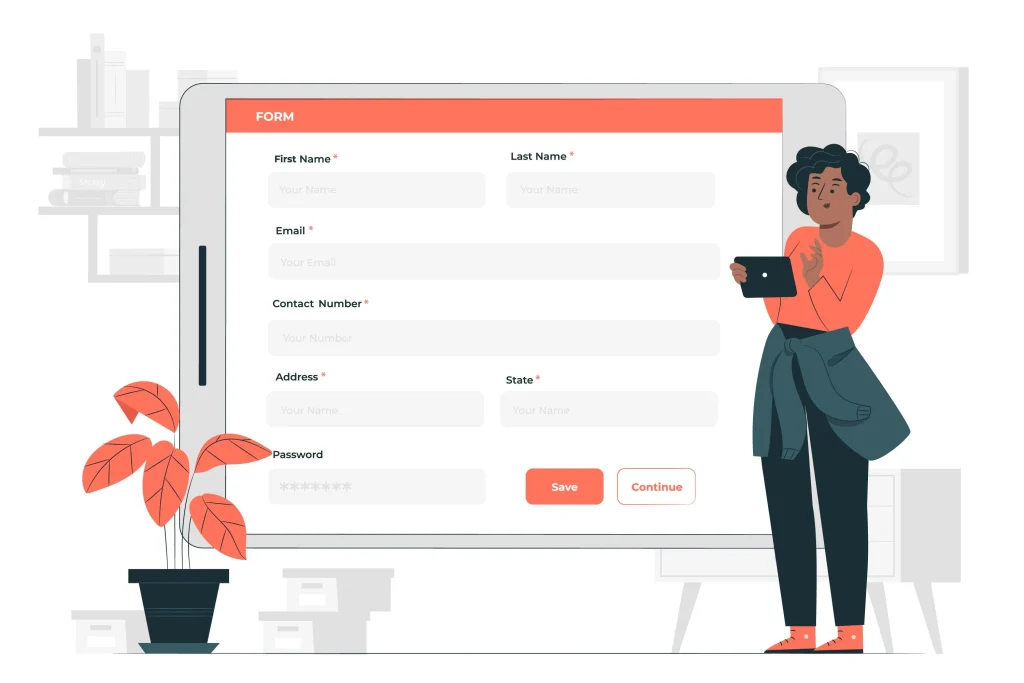
Embarking on a journey with a startup is a thrilling experience filled with innovation, growth, and the promise of a dynamic work environment. As startups continue redefining industries and shaping work’s future, the employee onboarding process takes center stage. Effective onboarding not only sets the tone for a successful and productive relationship but also ensures that new hires seamlessly integrate into a startup’s unique culture. This comprehensive guide explores essential documents that are pivotal in onboarding and empowering startups to welcome and engage their talent effectively.
In the fast-paced world of startups, onboarding goes beyond mere paperwork; it is a strategic initiative that lays the foundation for a thriving organizational culture. By understanding and implementing the key documents involved in the onboarding process, startups can foster a sense of belonging, equip employees with the necessary information, and accelerate their contributions to the company’s success.
Offer Letter
The offer letter is more than just a formal document extending a job offer; it’s the initial step in establishing a positive and professional relationship between a startup and a prospective employee. This section’ll delve into the intricacies of creating an effective offer letter that communicates key employment details and sets the tone for a successful collaboration.
Key Components of an Offer Letter:
- Introduction and Warm Greeting:
The offer letter should commence with a warm greeting, expressing the company’s excitement about welcoming the candidate on board. This sets a positive and welcoming tone from the very beginning. - Position and Department Details:
Clearly state the position for which the offer is extended, along with the specific department or team the candidate will join. This will provide clarity and avoid any potential confusion. - Terms of Employment:
Outline the terms of employment, including the start date, work schedule, and whether the position is full-time, part-time, or temporary. Clearly communicate expectations regarding work hours and any specific scheduling details. - Compensation and Benefits:
Provide a detailed breakdown of the compensation package, including salary, bonuses, and any other benefits offered such as health insurance, retirement plans, or stock options. This section should be transparent and easy to understand. - Conditions of Employment:
Specify any conditions or contingencies that need to be met for the offer to be valid. This may include successful completion of a background check, drug test, or verification of eligibility to work in the country. - At-Will Employment Statement:
If applicable, include a statement confirming the at-will nature of employment. This clarifies that either the employer or the employee can terminate the employment relationship at any time, with or without cause. - Company Policies and Code of Conduct:
Briefly mention the existence of company policies and the expectation that the employee will adhere to a code of conduct. Direct the candidate to the employee handbook or policies document for more details. - Request for Acceptance:
Conclude the offer letter with a clear and concise request for the candidate to formally accept the offer. Provide details on how acceptance should be communicated, whether through a signed document, email, or an online portal.
A thoughtfully constructed offer letter facilitates a smooth onboarding process and reflects the company’s commitment to professionalism and transparency. As startups compete for top talent, a compelling offer letter can be a key differentiator in attracting and retaining skilled individuals who will contribute to the company’s growth and success.

Employment Contract
The employment contract is a pivotal document that formalizes the relationship between a startup and its employees. It goes beyond the offer letter, delving into the terms and conditions governing the working relationship. In this section, we will explore the key components of an employment contract in the context of startups, emphasizing clarity and fairness to foster a positive and productive work environment.
Key Components of an Employment Contract:
- Introduction and Parties Involved:
Begin the employment contract by clearly introducing the parties involved – the employer (startup) and the employee. Include full legal names, addresses, and other relevant identifying details. - Position and Job Responsibilities:
Define the employee’s position, title, and a detailed description of their job responsibilities. Clearly outline expectations regarding performance and the standards to be met. - Duration of Employment:
Specify whether the employment is permanent, temporary, or for a fixed-term. If applicable, outline the conditions under which employment may be terminated or extended. - Compensation and Benefits:
Reiterate the details of the compensation package outlined in the offer letter, including salary, bonuses, commission structures, and any additional benefits. Ensure that this section is consistent with the initial offer. - Working Hours and Schedule:
Clearly define the regular working hours and the expected schedule. If the position involves irregular hours, on-call duties, or remote work, outline these specifics to avoid misunderstandings. - Confidentiality and Non-Disclosure:
Include clauses related to confidentiality and non-disclosure, emphasizing the employee’s obligation to protect sensitive company information, trade secrets, and proprietary data. - Non-Compete and Non-Solicitation:
If relevant, incorporate clauses restricting the employee from engaging in competitive activities or soliciting clients or employees for a specified period post-employment. Ensure these clauses are reasonable in scope and duration. - Intellectual Property Rights:
Clearly define the ownership of intellectual property created during the course of employment. Specify whether the startup or the employee retains rights to inventions, designs, or other creative works. - Termination and Severance:
Detail the conditions under which either party can terminate the employment relationship. Include provisions for severance pay, notice periods, or any other relevant termination-related details. - Dispute Resolution:
Specify the process for resolving disputes, whether through mediation, arbitration, or litigation. Clarity in dispute resolution mechanisms can prevent prolonged legal battles.
A well-crafted employment contract not only protects the startup’s interests but also provides a framework for a positive and collaborative work environment. It sets the stage for a mutually beneficial partnership, where the startup and its employees can thrive. As startups continue attracting top talent, a fair and transparent employment contract becomes crucial for building trust and fostering long-term success.

Confidentiality Agreement (NDA)
Protecting sensitive information is paramount in the fast-paced and competitive landscape of startups. A Confidentiality Agreement, commonly known as an NDA (Non-Disclosure Agreement), is crucial in ensuring that proprietary information remains secure. This section aims to provide startups with a comprehensive understanding of the key components of an effective NDA, fostering trust and safeguarding critical business assets.
Key Components of a Confidentiality Agreement (NDA):
- Introduction and Parties Involved:
Open the NDA with a clear introduction, identifying the parties involved – the disclosing party (the startup) and the receiving party (the employee or third party). Provide full legal names, addresses, and a brief overview of the purpose of the agreement. - Definition of Confidential Information:
Explicitly define what constitutes confidential information. This should encompass a broad range of proprietary data, including trade secrets, business strategies, financial information, product plans, and any other sensitive details unique to the startup. - Obligations of the Receiving Party:
Clearly outline the obligations of the receiving party regarding the confidential information. This typically includes a commitment to maintaining confidentiality, restricting access to authorized personnel only, and refraining from unauthorized disclosure or use. - Duration of Confidentiality:
Specify the duration for which the confidentiality obligations will apply. This can be for the duration of the employment or engagement and may extend beyond termination. Ensure that the timeframe is reasonable and aligns with the nature of the information. - Permitted Disclosures:
Define specific circumstances under which the receiving party is permitted to disclose the confidential information. This often includes disclosures required by law or court order, but the language should be precise to prevent unintended breaches. - Return or Destruction of Information:
Detail the steps the receiving party must take upon termination of the agreement or completion of the business relationship. This may include the return or destruction of all confidential materials and the certification of such actions. - Exceptions to Confidentiality:
Clearly articulate any exceptions to the confidentiality obligations. Certain information may not be considered confidential, or disclosure may be authorized with the written consent of the disclosing party. - Remedies for Breach:
Outline the remedies available to the disclosing party in the event of a breach of the NDA. This may include injunctive relief, monetary damages, or other appropriate legal actions. Specify the jurisdiction for dispute resolution.
Effective NDA is a legal formality and a vital tool for startups navigating a landscape where information is power. By implementing a well-constructed NDA, startups can build trust with employees and partners, creating a secure environment that fosters innovation and sustainable growth.

Employee Handbook or Policies Document
Clear communication and well-defined expectations are essential in a startup’s dynamic and evolving environment. An Employee Handbook or Policies Document is a comprehensive section that provides employees with a roadmap to navigate the company’s culture, policies, and expectations. This section outlines the key components of an effective handbook, fostering a positive and productive workplace in startup settings.
Key Components of an Employee Handbook or Policies Document:
- Introduction and Welcome:
Open the handbook with a warm welcome and a brief introduction to the company’s mission, values, and culture. This section sets the tone for a positive and inclusive work environment. - Equal Employment Opportunity (EEO) Policy:
Clearly articulate the company’s commitment to providing equal employment opportunities, free from discrimination or harassment based on factors such as race, gender, religion, or disability. - Code of Conduct and Professionalism:
Define expected standards of behavior, emphasizing professionalism, respect, and integrity. Outline the consequences of violating the code of conduct and the steps the company may take in response. - Work Hours, Attendance, and Punctuality:
Clearly communicate the expected work hours, attendance policies, and the importance of punctuality. Include any flexibility or remote work options, along with procedures for requesting time off. - Communication Protocols:
Detail communication guidelines, both within the company and with external stakeholders. This may include preferred channels, response times, and expectations for maintaining a professional tone in written and verbal communication. - Health and Safety Policies:
Outline the company’s commitment to providing a safe and healthy work environment. Include procedures for reporting accidents, maintaining cleanliness, and any specific safety protocols relevant to the nature of the work. - Benefits and Perks:
Provide an overview of the benefits and perks offered by the company, including health insurance, retirement plans, and any unique offerings. Clearly explain eligibility criteria and enrollment procedures. - Leave Policies:
Detail policies related to various types of leave, including vacation, sick leave, and parental leave. Specify the process for requesting leave and any documentation required. - Performance Expectations and Reviews:
Communicate the company’s expectations regarding employee performance. Explain the performance review process, including how goals are set, progress is monitored, and feedback is provided. - Training and Development Opportunities:
Highlight the company’s commitment to employee growth and development. Outline available training programs, mentorship opportunities, and any resources employees can access for professional advancement.
A well-crafted handbook is valuable for employees and the startup. It establishes expectations, facilitates communication, and contributes to a positive workplace culture. As startups evolve, a comprehensive handbook becomes foundational in building a cohesive and successful team.

Equity or Stock Option Agreements
Equity or stock options are integral components of compensation packages in the startup world, offering employees a stake in the company’s success. Understanding the terms and conditions outlined in Equity or Stock Option Agreements is crucial for employers and employees. This section aims to elucidate the key components of these agreements, providing clarity on how they function in the dynamic landscape of startup environments.
Key Components of Equity or Stock Option Agreements:
- Introduction and Overview:
Open the agreement with a clear introduction, outlining the document’s purpose and providing a brief overview of the equity or stock option being granted. This section sets the stage for the details that follow. - Grant Details:
Specify the details of the equity or stock option grant, including the number of shares, the type of equity (common stock, preferred stock, or options), and the grant date. Clearly explain any vesting schedules associated with the grant. - Vesting Schedule:
Detail the vesting schedule, outlining the timeframe over which the employee’s equity or stock options become exercisable. Common vesting structures include cliff vesting and gradual vesting over a set period. - Exercise Price:
If applicable, provide the exercise price at which employees can purchase the shares. Clearly explain any mechanisms for adjusting the exercise price, such as anti-dilution provisions. - Exercisability and Expiration:
Specify when the equity or stock options can be exercised and any expiration dates associated with the options. Include information on what happens to unexercised options upon termination of employment. - Tax Implications:
Briefly address the potential tax implications of holding or exercising the equity or stock options. It’s advisable for employees to seek professional advice to understand the tax implications specific to their situation. - Rights and Restrictions:
Outline any rights and restrictions associated with the equity or stock options. This may include voting rights, information rights, transfer restrictions, and any conditions for liquidity events. - Termination and Change of Control:
Clearly articulate the impact of employment termination on the equity or stock options. Address how the options are affected in the event of a change of control, merger, acquisition, or other significant corporate events.
Equity or stock options can be powerful tools for attracting and retaining startup talent. A well-crafted agreement compensates employees for their contributions and aligns their interests with the company’s long-term success. As startups navigate growth and potential liquidity events, equity agreements are pivotal in shaping a collaborative and mutually beneficial relationship between employees and the startup.

W-4 Form and I-9 Form
Ensuring proper payroll processing and legal compliance is imperative for startups as they bring new talent on board. Two essential forms in this process are the W-4 Form for federal income tax withholding and the I-9 Form for verifying an employee’s eligibility to work in the United States. This section aims to provide startups with a detailed understanding of these forms, facilitating a smooth onboarding process and maintaining compliance with regulatory requirements.
W-4 Form: Federal Income Tax Withholding:
- Introduction and Purpose:
Open the section on the W-4 Form by explaining its purpose — to determine the correct amount of federal income tax to withhold from an employee’s paycheck. Provide a brief overview of the employee’s responsibilities in completing the form accurately. - Personal Information:
Guide employees through providing personal information, including their name, address, filing status, and Social Security Number. Emphasize the importance of accuracy to prevent tax-related issues. - Filing Status and Allowances:
Explain the significance of selecting the appropriate filing status (e.g., Single, Married) and claiming allowances. Provide clarity on how these selections impact the amount of tax withheld. - Additional Withholding:
If employees wish to have additional amounts withheld from their paycheck, detail the process for indicating this on the W-4 Form. This section allows for customization based on individual tax situations. - Signature and Date:
Emphasize the necessity of a valid signature and the date on the W-4 Form. Incomplete or unsigned forms can lead to processing delays and potential errors in tax withholding.
I-9 Form: Employment Eligibility Verification:
- Introduction and Purpose:
Introduce the I-9 Form as a critical document for verifying an employee’s eligibility to work in the United States. Emphasize the legal requirement for employers to complete this form for every new hire. - Section 1 – Employee Information:
Guide employees through completing Section 1, which includes personal information, citizenship status, and attestation of their eligibility to work. Remind them of the importance of accuracy and honesty. - Section 2 – Employer Verification:
Explain the employer’s responsibilities in completing Section 2, which involves examining and verifying the employee’s identification documents. Clarify the acceptable documents for proof of identity and work eligibility. - Re-Verification and Updates:
Inform employers about the circumstances that may require re-verification, such as the expiration of work authorization. Emphasize the importance of keeping accurate and up-to-date I-9 records. - Retention and Recordkeeping:
Guide the retention of I-9 forms, stressing the importance of maintaining these records for a specified period. Emphasize compliance with U.S. Citizenship and Immigration Services (USCIS) regulations.
Understanding the nuances of W-4 and I-9 forms is a legal necessity and a crucial aspect of building a compliant and efficient startup workforce. Properly completed forms contribute to accurate tax withholding and confirm the eligibility of employees to work in the United States, ensuring a seamless onboarding process and avoiding potential legal issues.

Emergency Contact and Personal Information Form
In the dynamic and fast-paced startup environment, ensuring the safety and well-being of employees is paramount. The Emergency Contact and Personal Information Form is crucial in unforeseen circumstances, allowing startups to respond promptly and effectively. This section aims to outline the key components of these forms, emphasizing the importance of maintaining accurate and up-to-date information for the safety of the workforce.
Key Components of Emergency Contact and Personal Information Forms:
- Introduction and Purpose:
Begin with a clear introduction, explaining the purpose of the Emergency Contact and Personal Information Form. Emphasize its role in providing essential details for emergency situations and facilitating efficient communication. - Employee Personal Information:
Request comprehensive personal information, including the employee’s full name, date of birth, home address, and contact numbers. Ensure accuracy in this section, as it forms the foundation for emergency communication. - Emergency Contacts:
Provide spaces for employees to list multiple emergency contacts. Include fields for the contact’s relationship to the employee, their phone numbers, and any additional details that may aid in swift and effective communication. - Health Information:
Include a section for relevant health information, such as allergies, pre-existing medical conditions, and required medications. This information can be invaluable for emergency responders and medical personnel. - Authorization for Medical Treatment:
Include a statement where employees can grant authorization for emergency medical treatment if they are unable to provide consent. This ensures that necessary actions can be taken promptly in critical situations. - Special Instructions or Considerations:
Provide space for employees to note any specific instructions or considerations, such as language preferences, mobility issues, or other factors that emergency responders should be aware of when providing assistance. - Consistency and Updates:
Emphasize the importance of maintaining consistency in the provided information and prompt updates in case of any changes. Regularly remind employees to review and update their emergency contact details.
The safety and well-being of employees should be a top priority for startups. The Emergency Contact and Personal Information Form plays a vital role in this effort, as a proactive measure to facilitate effective communication and response during emergencies. By fostering a culture of awareness and preparedness, startups can create a safer and more secure work environment for their employees.

Benefits Enrollment Forms
In the competitive landscape of startups, offering attractive employee benefits is a key strategy for attracting and retaining top talent. Benefits Enrollment Forms facilitate enrollment, ensuring that employees can access and make the most of the company’s benefits. This section outlines the key components of these forms, emphasizing the importance of clear communication and accessibility in the benefits enrollment process.
Key Components of Benefits Enrollment Forms:
- Introduction and Purpose:
Begin the Benefits Enrollment Forms with a clear introduction, outlining the purpose of the document. Communicate that the form is a crucial step for employees to select and enroll in the various benefits offered by the company. - Employee Information:
Collect basic employee information, including full name, employee ID or social security number, and contact details. This ensures accurate record-keeping and effective communication regarding benefits. - Benefit Options:
Clearly present the available benefit options, including health insurance plans, dental and vision coverage, retirement plans, and any other benefits offered by the startup. Provide detailed information about each option. - Coverage Levels and Dependents:
Include sections for employees to indicate their desired coverage levels and provide information about dependents if applicable. This is crucial for tailoring benefit plans to meet individual and family needs. - Health Savings Accounts (HSAs) or Flexible Spending Accounts (FSAs):
If applicable, include sections for employees to enroll in HSAs or FSAs. Explain the benefits of these accounts and provide guidance on contribution limits and usage. - Premiums and Contributions:
Clearly outline any premiums or contributions associated with each benefit option. Provide details on how these amounts will be deducted from employee paychecks and the frequency of deductions. - Beneficiary Designations:
If the benefits include life insurance or retirement plans, include sections for employees to designate beneficiaries. Ensure that employees understand the importance of keeping these designations up to date. - Acknowledgment and Confirmation:
Include a section where employees can acknowledge their benefit selections and confirm their understanding of the terms and conditions. This can serve as a record of the employee’s choices.
The benefits enrollment process is a critical aspect of the overall employee onboarding experience. Well-structured Benefits Enrollment Forms contribute to employee satisfaction and engagement by providing access to valuable perks. As startups compete for top talent, a seamless and transparent benefits enrollment process is key to building a positive and inclusive workplace culture.

Non-Compete Agreement
In the fiercely competitive realm of startups, protecting intellectual property and retaining key talent is vital for sustained growth. Non-Compete Agreements are legal instruments that are crucial in preventing employees from engaging in activities that may directly compete with the startup after their employment ends. This section aims to outline the key components of Non-Compete Agreements, emphasizing their role in safeguarding innovation and securing a startup’s competitive edge.
Key Components of Non-Compete Agreements:
- Introduction and Purpose:
Begin the Non-Compete Agreement with a clear introduction, articulating the purpose of the document. Communicate that the agreement is designed to protect the startup’s proprietary information and maintain a competitive advantage. - Parties Involved:
Clearly identify the parties involved – the startup (employer) and the employee. Include full legal names, addresses, and any specific details that establish the relationship between the parties. - Scope of Restrictions:
Define the scope of activities that the employee is restricted from engaging in after the termination of their employment. This should be specific and reasonable, considering the industry, geographic location, and duration of the restriction. - Duration of Non-Compete:
Specify the duration for which the non-compete restrictions will be in effect. Common durations range from six months to a few years, and the chosen timeframe should align with the nature of the startup’s business. - Geographic Limitations:
If applicable, include geographic limitations to define the geographical area within which the employee is prohibited from competing. This ensures that the restrictions are reasonable and tailored to the startup’s business reach. - Consideration or Compensation:
Clearly outline any consideration or compensation provided to the employee in exchange for agreeing to the non-compete restrictions. This could include continued employment, specialized training, or other tangible benefits. - Confidentiality Obligations:
Reinforce the employee’s ongoing obligation to maintain the confidentiality of the startup’s proprietary information, even after the termination of employment. This complements the non-compete restrictions. - Enforcement and Remedies:
Specify the methods of enforcement and the remedies available to the startup in the event of a breach of the non-compete agreement. This may include injunctive relief, monetary damages, or other legal actions.
Non-Compete Agreements serve as powerful tools for startups to protect their intellectual property and maintain a competitive edge. By establishing clear restrictions and providing fair compensation, startups can foster an environment where innovation is safeguarded and key talent is retained.
The strategic use of Non-Compete Agreements is an integral part of a startup’s legal toolkit. When crafted thoughtfully, these agreements contribute to a startup’s ability to innovate, attract investors, and maintain a unique position in the market. As startups navigate growth and competition, Non-Compete Agreements become essential instruments for securing their intellectual property and preserving their market share.

Non-Disclosure Agreement (NDA) for Intellectual Property
Safeguarding intellectual property is paramount in startups’ dynamic and innovative landscape. Non-Disclosure Agreements (NDAs) for Intellectual Property serve as crucial legal instruments, delineating the terms under which sensitive information can be shared while protecting the startup’s proprietary assets. This section outlines the key components of NDAs, emphasizing their role in fostering collaboration and securing a startup’s creative endeavors.
Key Components of Non-Disclosure Agreements (NDA) for Intellectual Property:
- Introduction and Purpose:
Begin the NDA with a clear introduction, articulating the purpose of the agreement. Communicate that the agreement is designed to protect the startup’s intellectual property and confidential information while facilitating necessary collaboration. - Parties Involved:
Clearly identify the parties involved – the startup (disclosing party) and the individual or entity receiving the confidential information (receiving party). Include full legal names, addresses, and any specific details that establish the relationship between the parties. - Definition of Confidential Information:
Explicitly define what constitutes confidential information and intellectual property. This may include trade secrets, patents, proprietary processes, software code, or any other sensitive information unique to the startup. - Scope of Use:
Clearly outline the permissible uses of the confidential information. Define the purpose for which the information is shared and restrict the receiving party from using it for any other purpose without explicit consent. - Duration of Confidentiality:
Specify the duration for which the confidentiality obligations will apply. This can extend beyond the termination of any specific collaboration or partnership, ensuring long-term protection of the startup’s intellectual property. - Obligations of the Receiving Party:
Clearly articulate the obligations of the receiving party regarding the confidential information. This includes commitments to maintain confidentiality, restrict access to authorized personnel, and refrain from unauthorized disclosure or use. - Exceptions to Confidentiality:
Define specific circumstances under which the receiving party is permitted to disclose the confidential information. This may include disclosures required by law or court order, but the language should be precise to prevent unintended breaches. - Return or Destruction of Information:
Detail the steps the receiving party must take upon termination of the agreement or completion of the collaboration. This may include the return or destruction of all confidential materials and the certification of such actions. - Enforcement and Remedies:
Specify the methods of enforcement and the remedies available to the disclosing party in the event of a breach of the NDA. This may include injunctive relief, monetary damages, or other appropriate legal actions.
Non-Disclosure Agreements for Intellectual Property are invaluable tools for startups seeking to protect their innovative ideas and proprietary assets. By establishing clear expectations and legal recourse, startups can foster collaboration while safeguarding their intellectual capital.
A well-crafted NDA for intellectual property is not just a legal safeguard but also a strategic asset for startups. It allows them to confidently engage in collaborations, partnerships, and discussions, knowing that their innovative ideas are protected. As startups continue to thrive on innovation, NDAs become essential in maintaining a competitive edge and ensuring the longevity of their intellectual property.

Remote Work Policy
In response to the evolving nature of work and the increasing prevalence of remote arrangements, startups are embracing Remote Work Policies to provide clarity, support, and structure for their teams. This section aims to outline the key components of a Remote Work Policy, emphasizing the importance of flexibility, communication, and accountability in the dynamic startup environment.
Key Components of a Remote Work Policy:
- Introduction and Purpose:
Begin the Remote Work Policy with a clear introduction, articulating the purpose of the document. Communicate that the policy is designed to provide guidelines, expectations, and support for employees engaging in remote work arrangements. - Eligibility and Approval Process:
Clearly define the criteria for eligibility to work remotely and outline the process for requesting and approving remote work arrangements. Include considerations such as job responsibilities, performance, and any necessary equipment or technology. - Work Hours and Availability:
Establish expectations regarding work hours and availability for remote employees. Clarify whether employees are expected to adhere to standard business hours or if flexible scheduling is permitted. Emphasize the importance of clear communication regarding availability. - Communication Protocols:
Define communication protocols for remote teams, including preferred channels, response times, and regular check-ins. Encourage the use of collaboration tools and set expectations for prompt and effective communication. - Workspace and Equipment:
Provide guidance on creating a suitable remote workspace, including considerations for ergonomics, confidentiality, and a stable internet connection. Clarify the responsibility for providing and maintaining necessary equipment. - Security and Data Protection:
Emphasize the importance of maintaining security standards and data protection when working remotely. Provide guidelines for securing confidential information, using virtual private networks (VPNs), and adhering to cybersecurity best practices. - Performance and Accountability:
Set clear expectations for performance and accountability in remote work arrangements. Establish measurable goals and key performance indicators (KPIs) and communicate the process for performance evaluations. - Training and Support:
Offer resources, training, and support for remote employees to enhance their effectiveness in a virtual work environment. This may include providing access to collaboration tools, conducting virtual training sessions, and offering IT support. - Flexibility and Adaptability:
Acknowledge the dynamic nature of remote work and express the company’s commitment to flexibility and adaptability. Encourage open communication about challenges and seek collaborative solutions to support both individual and team success.
Adopting a Remote Work Policy reflects a startup’s commitment to fostering a modern and inclusive workplace. As startups navigate the evolving landscape of work preferences, a thoughtful and comprehensive policy becomes a cornerstone for attracting and retaining top talent, driving innovation, and ensuring the organization’s long-term success.

Training and Development Agreement
Continuous learning and skill development are crucial for individual and organizational success in startups’ dynamic and ever-evolving landscape. Training and Development Agreements serve as strategic tools, outlining the terms and expectations for employee growth and acquiring new skills. This section aims to provide startups with an understanding of the key components of these agreements, emphasizing the value of investing in the professional development of their workforce.
Key Components of Training and Development Agreements:
- Introduction and Purpose:
Open the Training and Development Agreement with a clear introduction, outlining the purpose of the document. Communicate that the agreement is designed to formalize the commitment to employee training, skill development, and career growth. - Parties Involved:
Clearly identify the parties involved – the startup (employer) and the employee. Include full legal names, job titles, and any specific details that establish the relationship between the parties. - Training Objectives and Scope:
Define the specific training objectives and scope outlined in the agreement. This could include acquiring new technical skills, professional certifications, leadership training, or any other relevant development areas aligned with the employee’s role and the startup’s goals. - Training Duration and Schedule:
Specify the duration of the training and the schedule agreed upon for the employee’s participation. This may include both formal training programs and ongoing development activities. - Responsibilities and Obligations:
Clearly outline the responsibilities and obligations of both the startup and the employee. Detail the startup’s commitment to providing resources, support, and access to training opportunities, and outline the employee’s commitment to actively participating in and completing the designated training. - Costs and Financial Arrangements:
Address any financial arrangements related to the training, such as the costs covered by the startup, reimbursement policies, or any financial commitments required from the employee, especially if the training involves external programs or certifications. - Intellectual Property Rights:
Clarify the ownership of any intellectual property developed or acquired during the training. Specify whether the startup retains rights to materials, processes, or knowledge gained during the training period. - Performance Metrics and Evaluation:
Establish measurable performance metrics or milestones to evaluate the employee’s progress and successful completion of the training. This could include assessments, evaluations, or other agreed-upon indicators. - Career Advancement and Opportunities:
Discuss potential career advancement opportunities or changes in job responsibilities that may result from successful completion of the training. Illustrate how the startup values and recognizes the enhanced skills and knowledge acquired.
A well-crafted Training and Development Agreement is a testament to a startup’s commitment to the professional growth of its employees. As startups compete for top talent and seek to remain at the forefront of innovation, these agreements become essential tools for building a skilled and motivated workforce. By aligning individual development with organizational goals, startups pave the way for sustained success and competitive advantage in the dynamic business landscape.

Performance Review and Evaluation Forms
In the competitive and dynamic world of startups, regular performance reviews play a pivotal role in fostering employee growth, aligning individual contributions with organizational goals, and ensuring high productivity. Performance Review and Evaluation Forms are structured tools to facilitate meaningful discussions between employees and supervisors. This section outlines the key components of these forms, emphasizing their importance in driving individual and collective success within startup teams.
Key Components of Performance Review and Evaluation Forms:
- Introduction and Purpose:
Begin the Performance Review and Evaluation Forms with a clear introduction, articulating the document’s purpose. Communicate that the forms are designed to assess and discuss the employee’s performance, set goals, and provide constructive feedback. - Employee Information:
Include spaces for basic employee information such as name, job title, department, and the period covered by the performance review. This ensures clarity and organization in record-keeping. - Performance Goals:
Outline the performance goals set for the employee during the specified period. These goals should be aligned with the startup’s overall objectives and the employee’s role within the organization. - Key Performance Indicators (KPIs):
Define and assess specific Key Performance Indicators (KPIs) relevant to the employee’s role. This provides a quantitative and qualitative basis for evaluating performance against established benchmarks. - Achievements and Accomplishments:
Create sections for employees to highlight their key achievements and accomplishments during the review period. This will allow for a comprehensive understanding of the employees’ contributions. - Areas for Improvement:
Provide space for supervisors to identify areas for improvement. Frame these suggestions constructively, emphasizing opportunities for growth and development. - Training and Development Needs:
Discuss the employee’s training and development needs based on the performance review. This could include recommendations for skill-building activities, workshops, or further education to enhance performance. - Communication and Collaboration:
Evaluate the employee’s communication and collaboration skills. Assess their ability to work within a team, contribute to projects, and effectively communicate with peers and superiors. - Overall Performance Rating:
Include a section for an overall performance rating. This rating can be numerical or qualitative and should reflect the employee’s overall contribution and effectiveness. - Employee Comments and Self-Assessment:
Allow space for employees to provide comments and self-assessment. Encouraging employees to reflect on their performance fosters engagement and ownership of professional development.
Using Performance Review and Evaluation Forms effectively is a strategic investment in a startup’s most valuable asset – its human capital. As startups strive for innovation and sustainable growth, these forms become instrumental in aligning individual efforts with organizational goals. By fostering a culture of regular feedback and professional development, startups can position themselves for long-term success in a competitive business landscape.

Acknowledgment of Receipt
Clear and effective communication is the backbone of any successful organization, and startups, in particular, benefit from formalizing the acknowledgment of important information, policies, or documents. The Acknowledgment of Receipt form is crucial in ensuring that employees receive, understand, and acknowledge the information provided. This section outlines the key components of these forms, emphasizing their role in promoting transparency, compliance, and mutual understanding within startup teams.
Key Components of Acknowledgment of Receipt Forms:
- Introduction and Purpose:
Open the Acknowledgment of Receipt form with a clear introduction, outlining the purpose of the document. Communicate that the form is designed to confirm an employee’s receipt and understanding of specific information, policies, or documents. - Employee Information:
Include spaces for basic employee information such as name, job title, department, and date of acknowledgment. This ensures accuracy in record-keeping and provides a clear reference point. - Description of Document or Information:
Clearly describe the document, policy, or information being acknowledged. Include details such as the title, date, and a brief summary to ensure that employees can easily identify the subject matter. - Responsibilities and Expectations:
Outline any specific responsibilities or expectations associated with the acknowledged information. This could include compliance with policies, adherence to guidelines, or specific actions that employees are expected to take. - Confirmation of Understanding:
Provide a section where employees can confirm their understanding of the information. This may include a checkbox or space for written confirmation to ensure that employees have grasped the content. - Signature and Date:
Include spaces for the employee’s signature and the date of acknowledgment. A physical or electronic signature serves as a formal confirmation of receipt and understanding. - Witness or Manager Signature:
If applicable, provide space for a witness or manager’s signature. This adds an additional layer of confirmation and accountability, particularly for critical policies or sensitive information. - Retention of Acknowledgment:
Specify how the acknowledgment will be retained, whether digitally or in hard copy. Clearly communicate the storage and retrieval procedures to ensure accessibility for future reference.
Implementing Acknowledgment of Receipt forms reflects a startup’s commitment to transparency and adherence to established policies and procedures. As startups navigate growth and change, these forms become essential in ensuring that all team members effectively communicate and acknowledge important information. By formalizing these processes, startups lay the groundwork for a well-informed and compliant workforce.

Dispute Resolution Agreement
Disputes and conflicts are inevitable in any workplace, but addressing them effectively is crucial for maintaining a positive and productive work environment. Dispute Resolution Agreements are essential in startups, outlining a structured process for addressing and resolving conflicts. This section outlines the key components of these agreements, emphasizing their role in fostering open communication, collaboration, and a harmonious workplace within startup teams.
Key Components of Dispute Resolution Agreements:
- Introduction and Purpose:
Open the Dispute Resolution Agreement with a clear introduction, outlining the purpose of the document. Communicate that the agreement is designed to provide a structured and fair process for resolving workplace disputes and conflicts. - Parties Involved:
Clearly identify the parties involved – the startup (employer) and the employees. Include any specific details necessary to define the scope of application, such as job titles or departments. - Scope of Application:
Define the scope of application for the agreement. Clearly articulate the types of disputes or conflicts covered, ensuring that employees understand when the agreement comes into effect. - Informal Resolution Steps:
Outline the initial steps for informal dispute resolution. This may include encouraging open communication between involved parties, seeking resolution through direct discussion, and involving immediate supervisors if necessary. - Formal Resolution Process:
Define the formal resolution process to be followed if the dispute remains unresolved after informal steps. This may involve mediation, arbitration, or other agreed-upon methods. Specify who will facilitate these processes. - Timelines and Deadlines:
Include timelines and deadlines for each stage of the resolution process. Establishing clear timeframes helps prevent unnecessary delays and ensures a prompt and efficient resolution. - Confidentiality and Privacy:
Emphasize the importance of confidentiality and privacy throughout the resolution process. This instills trust and encourages employees to participate openly without fear of reprisal. - Recordkeeping:
Specify recordkeeping procedures for documenting each step of the resolution process. Maintaining accurate records is crucial for future reference, analysis, and potential legal considerations. - No Retaliation Clause:
Include a clause prohibiting retaliation against any party involved in the dispute resolution process. This ensures a safe environment for employees to raise concerns without fear of adverse consequences. - Review and Modification:
Outline a process for periodically reviewing and, if necessary, modifying the dispute resolution agreement. This allows startups to adapt their processes based on the evolving needs and dynamics of the organization.
The effective implementation of Dispute Resolution Agreements is a testament to a startup’s commitment to creating a workplace where conflicts are addressed promptly and fairly. As startups grow and evolve, these agreements become invaluable in promoting a harmonious and collaborative culture, ultimately contributing to the organization’s long-term success.
Conclusion
By incorporating these essential documents into the onboarding process, startups can establish a clear and legally sound foundation for their working relationships. Customizing these documents to align with the startup’s specific needs and consulting legal professionals ensures compliance with local labor laws, fostering a positive and legally compliant work environment. Open communication and transparency throughout the onboarding process contribute to a successful and harmonious startup experience for both employers and employees.
This article was created by the FirstHR team. You can find even more helpful HR tips in the Guides section. In the Template section we have prepared for you the most popular HR documents that you can download for free. Enjoy!





